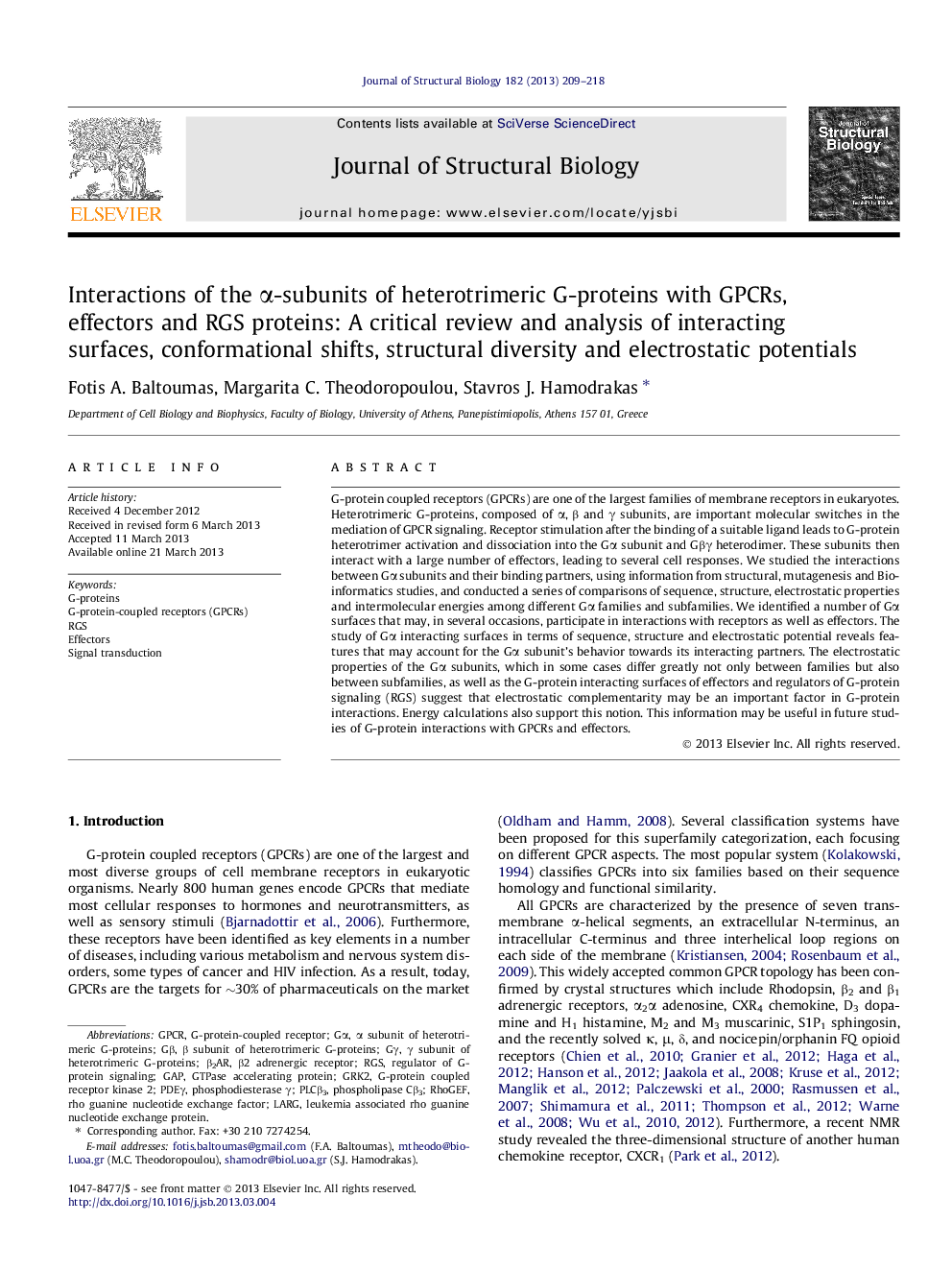| کد مقاله | کد نشریه | سال انتشار | مقاله انگلیسی | نسخه تمام متن |
|---|---|---|---|---|
| 2828516 | 1162721 | 2013 | 10 صفحه PDF | دانلود رایگان |

G-protein coupled receptors (GPCRs) are one of the largest families of membrane receptors in eukaryotes. Heterotrimeric G-proteins, composed of α, β and γ subunits, are important molecular switches in the mediation of GPCR signaling. Receptor stimulation after the binding of a suitable ligand leads to G-protein heterotrimer activation and dissociation into the Gα subunit and Gβγ heterodimer. These subunits then interact with a large number of effectors, leading to several cell responses. We studied the interactions between Gα subunits and their binding partners, using information from structural, mutagenesis and Bioinformatics studies, and conducted a series of comparisons of sequence, structure, electrostatic properties and intermolecular energies among different Gα families and subfamilies. We identified a number of Gα surfaces that may, in several occasions, participate in interactions with receptors as well as effectors. The study of Gα interacting surfaces in terms of sequence, structure and electrostatic potential reveals features that may account for the Gα subunit’s behavior towards its interacting partners. The electrostatic properties of the Gα subunits, which in some cases differ greatly not only between families but also between subfamilies, as well as the G-protein interacting surfaces of effectors and regulators of G-protein signaling (RGS) suggest that electrostatic complementarity may be an important factor in G-protein interactions. Energy calculations also support this notion. This information may be useful in future studies of G-protein interactions with GPCRs and effectors.
Journal: Journal of Structural Biology - Volume 182, Issue 3, June 2013, Pages 209–218